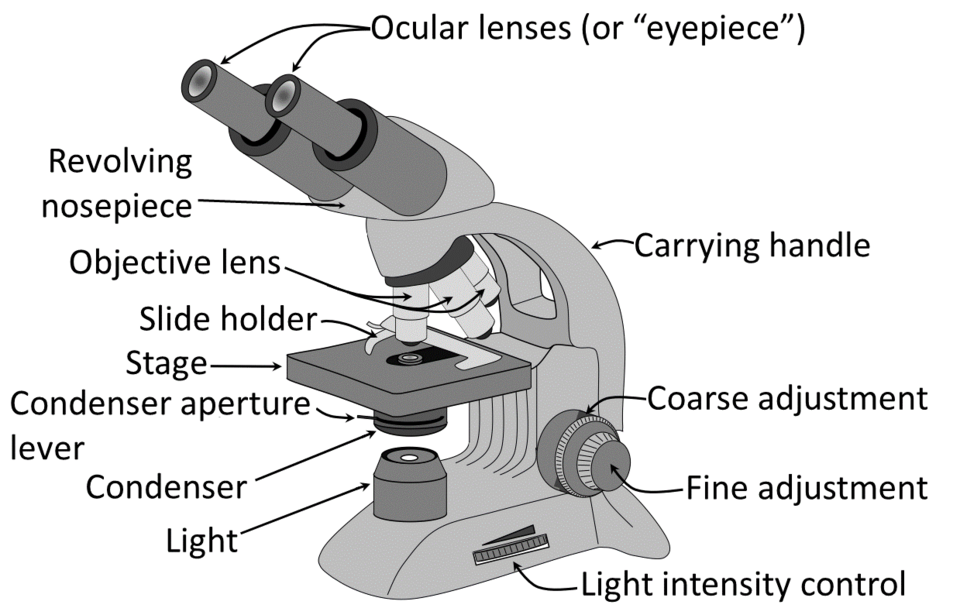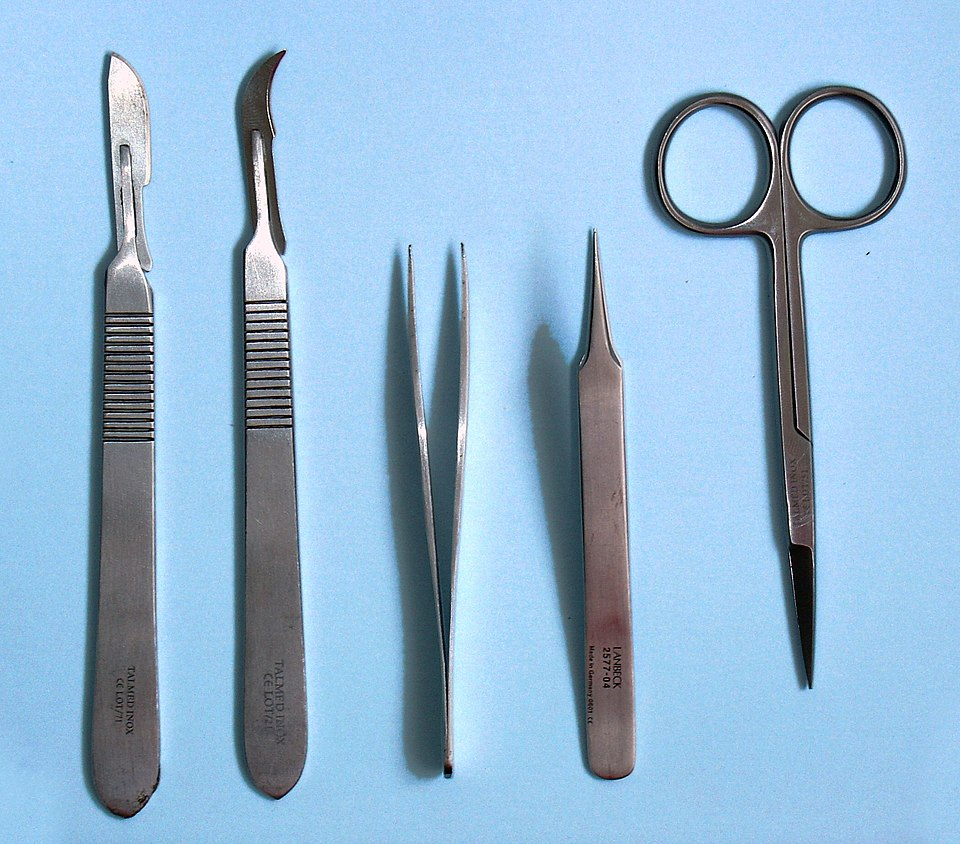OCR Specification focus:
‘Use a wide range of practical apparatus and techniques safely and correctly as required by the course.’
Using practical apparatus confidently is essential in A-Level Biology, enabling accurate data collection and safe, reliable experimentation. Correct technique improves the validity of results and allows meaningful interpretation of biological investigations.
Mastering Core Laboratory Equipment
Students must handle a range of scientific instruments with precision to obtain trustworthy data. Accuracy, the closeness of a measured value to the true value, relies heavily on correct apparatus use. Before any procedure, check that equipment is clean, undamaged and suitable for the measurement required.
Balances, Micropipettes and Measuring Cylinders
Correct liquid and mass measurement is central to Biology investigations.
Balances should be zeroed before use and protected from drafts that affect readings.
Micropipettes, used for very small volumes, must be set within their measurement range and held vertically while drawing liquid to prevent air bubbles.
Measuring cylinders measure larger volumes but are less precise than pipettes or burettes, so must be read at eye level to avoid parallax error, the misreading of a scale due to an incorrect viewing angle.
Light Microscopes
The light microscope is a core instrument for observing cell structures.
Begin at low power to locate the specimen.
Use coarse focus only with the lowest objective, switching to fine focus at higher magnifications.
Adjust the diaphragm to control contrast and light intensity for clearer images.

A labelled diagram of a compound light microscope showing key structural components, including the eyepiece, objective lenses, focus knobs and diaphragm, which control image clarity and contrast. Source.
Magnification: The number of times larger an image appears compared with the actual size of the object.
Water Baths, Thermometers and Temperature Control
Temperature must be tightly regulated in biological reactions. Water baths are used to maintain constant conditions, preventing fluctuations that could alter enzyme activity. Digital thermometers give more precise readings than analogue ones and should be left to stabilise before recording data.
Techniques for Successful Biological Experimentation
Filtration, Heating and Cooling
Common preparatory techniques must be completed safely and methodically.
Filtration separates solids from liquids using filter paper and a funnel.
Heating should be performed with a Bunsen burner on a heatproof mat, with hair tied back and flammable materials kept clear.
Cooling glassware gradually prevents cracking due to rapid temperature change.
Microscopy Techniques
Staining and slide preparation are vital for improving contrast in specimens. Using a coverslip lowers the risk of trapping air bubbles, which obscure detail. Slides should be handled by the edges to avoid fingerprints that scatter light and degrade image clarity.
Dissection Skills
When dissecting biological material, sharp instruments such as scalpels and scissors must be used with controlled strokes, always cutting away from the body. Dissection boards protect benches and stabilise the specimen to improve precision.

A set of core dissection instruments, including scalpels, scissors and forceps, which must be handled carefully to ensure precision and maintain safe working practices during biological dissection. Source.
Waste biological material must be disposed of following laboratory rules.
Measuring, Timing and Recording Data
Use of Scales, Timers and Data Logging
Stopclocks should be started and stopped consistently at defined experimental points.
Data loggers provide continuous recordings of variables such as temperature or pH, increasing reliability.
Calibration: The process of checking or adjusting measuring equipment by comparing it to a known standard.
Recording data in organised tables during the practical prevents loss of information and supports later processing.
Safety and Good Laboratory Practice
Personal Protective Equipment and Risk Awareness
Correct technique must always be paired with safe working practices, including:
Wearing goggles, lab coats, and gloves where appropriate
Keeping aisles clear and avoiding running or crowding
Knowing the positions of eye-wash stations, fire blankets and first-aid kits
Glassware should be inspected for cracks before heating, and chemicals must be labelled clearly to prevent mix-ups. Microorganism handling requires aseptic technique to prevent contamination. This includes disinfecting benches, flaming metal instruments and minimising exposure of culture plates to the air.
Waste Disposal and Clean-Down
Dispose of broken glass in designated bins and biological samples in appropriate waste containers. After experiments, all equipment should be cleaned, dried and returned to storage so it is ready for the next investigation. Proper shut-down routines help maintain a safe and efficient laboratory environment.
FAQ
First repeat the measurement to confirm the inconsistency. Then check for faults such as dirty apparatus, air bubbles in pipettes, loose components on microscopes, or drafts affecting balances.
If the fault continues, recalibrate the equipment or replace it. Record any issues in your notes to support evaluation of your method later.
Work near a disinfected surface, wash hands before and after handling samples, and avoid touching the inside of containers, lids, or pipette tips.
Where possible:
Use sterile, disposable tools
Minimise exposure of open containers
Flame sterilise metal instruments when appropriate
Keeping equipment clean protects sample integrity and improves data reliability.
If a measuring device has not reached the same temperature as its environment, the value will drift and give a misleading result. Allowing time for equilibration ensures that the measurement reflects true conditions.
Always wait until readings stop changing before recording data, especially in temperature-sensitive experiments.
Use a pipette when:
A small volume needs to be measured
High precision is required
Solutions must be transferred without splashing or residue
Measuring cylinders are better for larger, less precise volumes. Choosing the correct tool reduces error and improves repeatability.
Start and stop the timer at clear, predefined points in the method, rather than reacting spontaneously.
To improve timing accuracy:
Use digital stopclocks
Repeat timings and calculate a mean
Assign one person to timing during group work
Consistent timing reduces human error and strengthens the reliability of results.
Practice Questions
Question 1 (2 marks)
State two laboratory safety precautions a student should follow when using practical apparatus during a biological experiment.
Question 1 (2 marks)
Award one mark for any two of the following, up to a maximum of two marks:
Wear appropriate personal protective equipment such as goggles or a lab coat. (1)
Tie back long hair and secure loose clothing. (1)
Handle glassware carefully and check for cracks before use. (1)
Keep the workspace clear and follow all teacher or technician instructions. (1)
Question 2 (5 marks)
A student is using a microscope, a water bath, and a measuring cylinder to collect data during an investigation. Describe how the student should use each piece of apparatus correctly to ensure accurate and reliable results. In your answer, refer to avoiding common errors and good laboratory practice.
Question 2 (5 marks)
Award marks for the following valid points, up to a maximum of five marks:
Microscope: start on the lowest magnification and use coarse focus only on low power to avoid damaging the slide. (1)
Microscope: use fine focus for high power and adjust the diaphragm to improve contrast for clearer images. (1)
Water bath: check the temperature using a thermometer and allow it to equilibrate before placing samples inside. (1)
Measuring cylinder: read the volume at eye level at the bottom of the meniscus to avoid parallax error. (1)
Good laboratory practice: ensure apparatus is clean, set up securely, and measurements are repeated for reliability. (1)

